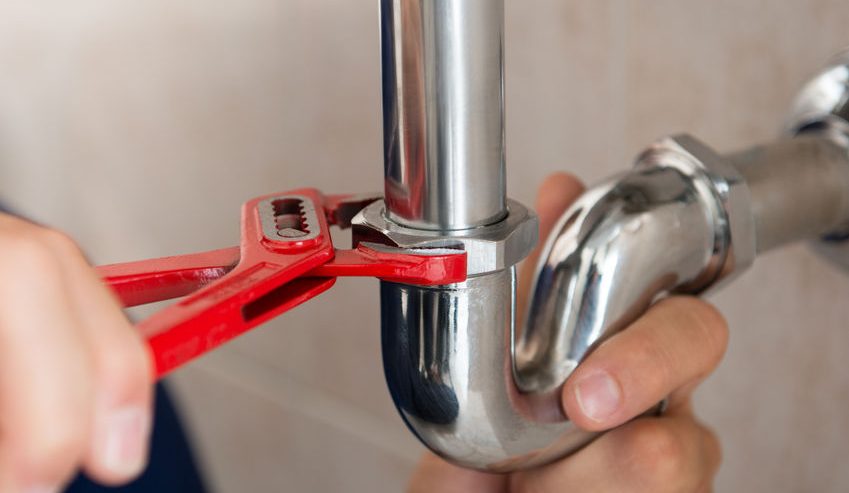Water leakage is a common problem that homeowners face, but many underestimate its impact until serious damage occurs. A small leak in a pipe or roof can quickly escalate into structural issues, mold growth, and costly repairs. Understanding the causes and early signs of water leakage is crucial for maintaining a safe and healthy home environment. Water leakage repair not only protects property value but also prevents health risks associated with damp conditions. Homeowners should recognize that even minor leaks can lead to significant consequences if left unattended. Regular inspection and timely repair are key strategies to manage water-related issues effectively. Whether you are dealing with a leaky faucet, a damaged roof, or a hidden basement leak, prompt action can save money and preserve your home’s integrity.
Understanding Water Leakage
Water leakage occurs when water escapes from pipes, roofing, or other containment systems due to cracks, corrosion, or poor installation. Common causes include aging plumbing, damaged roofing materials, clogged gutters, and foundation cracks. Water leaks are not limited to obvious locations; hidden leaks inside walls, under floors, or behind appliances are often the most damaging. Over time, persistent leaks can weaken structural components, damage electrical systems, and encourage mold and mildew growth. Even minor leaks contribute to increased water bills, making detection and repair essential. Different types of leaks, such as continuous dripping or intermittent seepage, require specific repair methods. Knowing the type of leak helps homeowners decide between temporary fixes and professional intervention.
Identifying Signs of Water Leakage
Detecting water leakage early can prevent extensive damage and high repair costs. Visual indicators include discolored walls, peeling paint, warped flooring, and mold or mildew patches. Homeowners may also notice damp or musty odors, which signal hidden moisture. Dripping sounds, even when no water is in use, are a strong clue that a leak exists. Unusually high water bills may point to unseen leaks in plumbing systems. Moisture meters and infrared cameras are tools that professionals use to locate hidden water intrusion accurately. Recognizing these warning signs allows homeowners to act quickly, minimizing property damage and health risks associated with mold exposure.
Common Areas Susceptible to Water Leakage
Water leaks can occur in various parts of the home, each requiring different repair approaches. Plumbing systems, including faucets, toilets, and pipes, are frequent sources of leaks due to aging materials and loose connections. Roofs and ceilings can develop leaks from cracked tiles, missing shingles, or clogged gutters, particularly during heavy rainfall. Basements and foundations are vulnerable to seepage, cracks, and poor drainage, which can compromise the home’s structural integrity. Household appliances such as washing machines, dishwashers, and water heaters may leak if hoses wear out or valves fail. Even small leaks from these areas can escalate, leading to extensive water damage over time. Homeowners should routinely inspect these areas to detect issues early and schedule timely repairs.
Immediate Steps to Take When a Leak is Detected
Prompt action is vital when a water leak is discovered to minimize damage and prevent further complications. The first step is to shut off the main water supply to prevent ongoing water loss. Next, containing the leak with towels, buckets, or plastic sheeting helps limit the spread of water. Documenting visible damage with photos may assist with insurance claims. Assessing the severity of the leak helps determine whether a DIY repair is feasible or a professional plumber is needed. In some cases, temporary fixes such as sealing minor pipe cracks or tightening loose fittings can stabilize the situation. Larger leaks, particularly in main pipes, roofs, or foundations, require immediate professional attention. Homeowners should avoid using electrical appliances near the affected area until repairs are completed for safety reasons.
Professional Water Leakage Repair Methods
Professional water leakage repair offers long-term solutions for various types of leaks. Pipe repair or replacement involves identifying the affected sections, choosing the appropriate material, and performing a secure repair. Modern leak detection technologies include thermal imaging, acoustic sensors, and pressure testing, which help locate hidden leaks without invasive procedures. Roof repairs may involve replacing damaged shingles, fixing cracked tiles, or addressing gutter blockages to ensure proper drainage. Basements and foundations often require waterproofing solutions, such as sealants, membranes, or drainage systems. Professionals ensure that repairs are durable and meet safety standards, reducing the risk of recurring problems. Choosing experienced plumbers or contractors ensures the repair is thorough and minimizes the chance of additional damage.
DIY vs Professional Repair
Some water leaks can be handled safely by homeowners, but more complex issues demand professional expertise. Simple fixes include replacing faucet washers, tightening pipe joints, or applying sealants to minor cracks. Attempting advanced repairs without proper tools or knowledge can worsen the problem or create safety hazards. Professional repair is typically recommended for leaks in main water lines, roofs, or foundation areas. Although DIY solutions may be cost-effective initially, professional services often save money in the long run by preventing repeated damage. Additionally, licensed contractors can provide warranties for their work, ensuring reliability. Homeowners should weigh the risks, costs, and skills required before attempting repairs themselves.
Preventative Measures to Avoid Water Leakage
Preventing water leaks is often more cost-effective than repairing damage after it occurs. Routine maintenance, such as checking pipes, roof shingles, and appliances, helps identify potential issues early. Proper sealing around windows, doors, and plumbing fixtures prevents water intrusion. Installing water leak detection devices adds an extra layer of protection by alerting homeowners to leaks before they escalate. Seasonal inspections are particularly important in areas prone to heavy rainfall or freezing temperatures. Proper drainage around the home, including gutters and downspouts, reduces the risk of foundation leaks. Homeowners should also ensure that appliances and plumbing systems are installed correctly and maintained regularly to prolong their lifespan.
Long-Term Impacts of Ignoring Water Leaks
Ignoring water leaks can result in severe consequences for both property and health. Structural damage from prolonged moisture can weaken walls, floors, and foundations, creating costly repair needs. Mold and mildew growth pose health risks, especially for individuals with respiratory conditions or allergies. Leaks contribute to higher water bills, wasting resources and adding financial strain. Over time, recurring leaks can reduce the overall value of the property, making it less attractive to potential buyers. Electrical systems exposed to water damage become safety hazards, increasing the risk of short circuits or fires. Timely detection and repair are essential to protect the home’s longevity, prevent health issues, and maintain property value.
FAQ on Water Leakage Repair
How can I tell if I have a hidden water leak?
Look for damp spots, mold, unusual odors, or higher-than-normal water bills. Professional leak detection tools such as thermal cameras can identify hidden leaks behind walls or under floors.
Can small leaks fix themselves over time?
No, even minor leaks will worsen without repair. They can cause structural damage, mold growth, and higher utility costs.
What are the most common causes of water leakage in older homes?
Aging pipes, worn-out seals, roof damage, foundation cracks, and outdated appliances are frequent culprits in older properties.
How much does professional water leakage repair usually cost?
Costs vary depending on the type and location of the leak, ranging from minor faucet repairs to extensive plumbing or foundation work.
Are water leak detection devices reliable for home use?
Yes, modern devices are highly effective for early detection, alerting homeowners to leaks before significant damage occurs.
Takeaway
Water leakage repair is critical for maintaining a safe, healthy, and structurally sound home. Identifying leaks early, understanding the affected areas, and taking prompt action can prevent costly damage and health hazards. Professional repair services, coupled with routine maintenance and preventative measures, offer the most reliable protection against water-related issues. Homeowners who stay vigilant and proactive can ensure their property remains secure, functional, and valuable over time. Investing in proper repairs and preventive strategies is a practical approach to safeguarding homes and reducing long-term costs.






